Color changing flowers are a beautiful addition to any garden or indoor space. Whether you’re looking to spice up your garden or create a unique centerpiece for your home, consider adding some color changing flowers to your collection. With their stunning hues and special characteristics, they’re sure to impress anyone who sees them.
Color changing flowers are some of the most fascinating and beautiful plants. Whether you’re a gardening enthusiast or appreciate nature’s beauty, these flowers will surely capture your attention. Understanding how they change colors and what causes it helps you ensure these lovely flowers thrive in your garden. Let’s check out the top 11 beautiful color changing flowers below.
How Do Flowers Change Color?
Flowers have different pigments that determine their color. Temperature can also affect the color of flowers. When it’s warm, some flowers produce more yellow or orange pigments, while cooler temperatures can make them produce more red or purple colors. Light is another factor that plays a role in changing flower colors. Some flowers change their pigment levels depending on the intensity and spectrum of light they receive.
Additionally, soil pH levels can affect the availability of certain nutrients to plants, affecting the production of pigments and changing flower colors. Numerous factors contribute to how flowers change color – from temperature to light exposure to nutrient availability. By understanding these factors, gardeners can help encourage vibrant blooms with beautiful coloring all season long.
The Benefits of Having Color Changing Flowers
Color changing flowers are not only beautiful, but they also have several benefits. The most significant advantage of having these flowers is that they add an element of surprise and excitement to your garden or home decor. You never know what color the flower will turn into next, which keeps things interesting. Another benefit is that these flowers can symbolize different emotions depending on their colors. Having a variety of color changing flowers in your garden can help create a diverse range of emotions and moods.
Furthermore, color changing flowers attract pollinators such as bees, butterflies, and hummingbirds due to their vibrant colors. This helps with cross-pollination for other plants in your garden or nearby areas. In addition to their aesthetic appeal and pollinator attraction properties, some color changing flowers also have medicinal properties. Color changing flowers have numerous benefits beyond being visually appealing; they offer emotional symbolism and attract pollinators aiding biodiversity efforts while providing natural remedies with immune-boosting potential.
Top 11 Beautiful Color Changing Flowers
Lungworts
These beautiful flowers bloom in shades of pink and blue with white spots on their petals. Initially, Lungworts start with bright pink or blue colors but eventually fade into softer pastel hues as they mature. The color change gives them an interesting and dynamic appearance that can add depth to any garden.
In case you missed it: Indoor Plants You Can Propagate from Pups
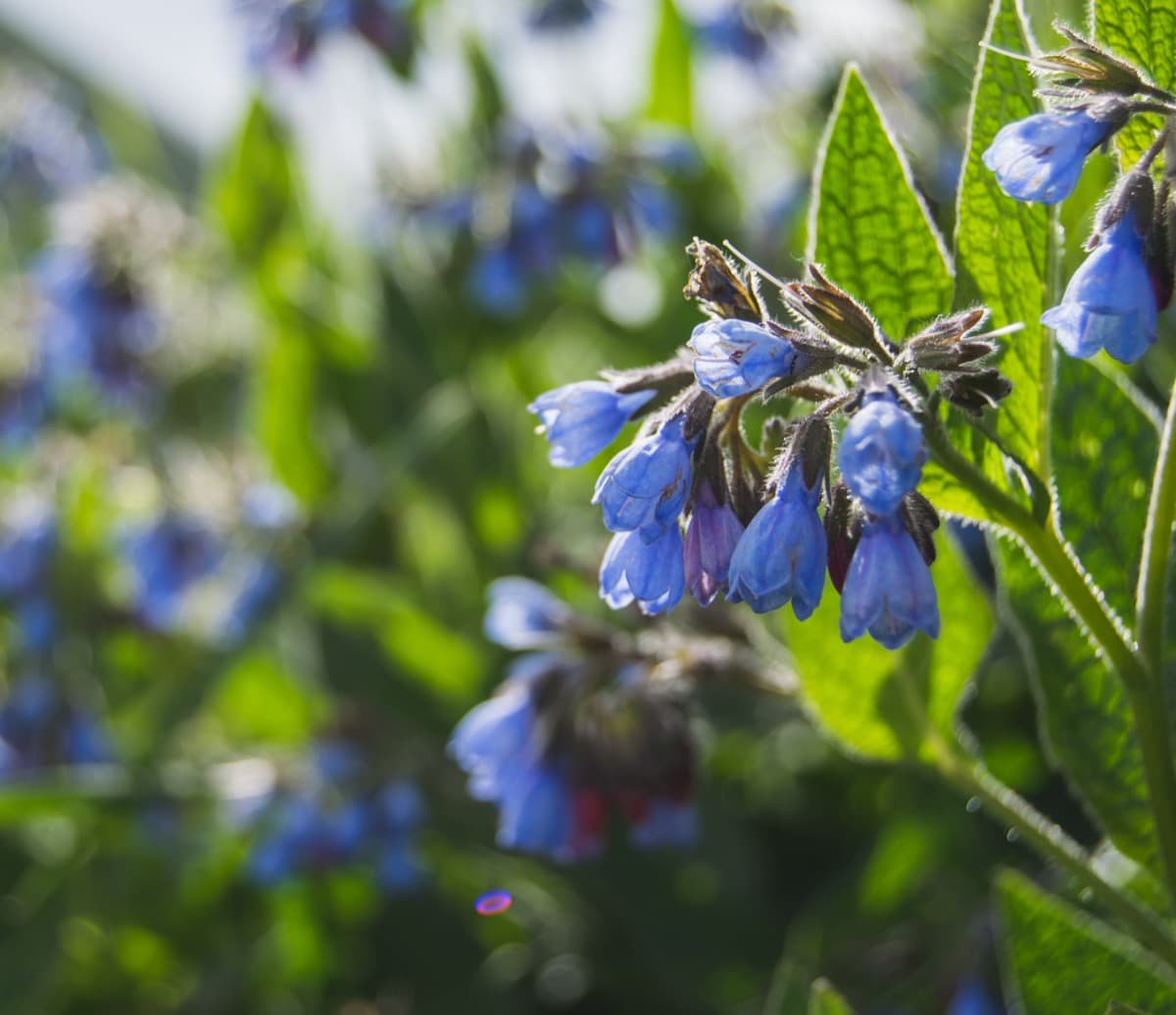
Besides adding aesthetic value to your garden, Lungworts have medicinal properties too. If you’re considering planting Lungworts in your garden, remember they prefer shady areas with moist soil. You can plant them under trees or alongside other shade-loving plants like ferns for a beautiful woodland effect. Lungworts are a great addition to any garden thanks to their stunning changing colors and health benefits.
Yesterday Today Tomorrow
This plant got its name from how its flowers change color over time. The blooms start violet-blue on the first day and gradually fade into lavender-pink on the second day before turning white on the third day. It’s like having three different flowers blooming at once.
It prefers moist but well-draining soil with partial shade, making it perfect for those who don’t have full sun exposure in their gardens.
This shrub can grow a few feet tall and wide if left unpruned, but it can be kept smaller through regular pruning after the flowering season ends in late summer or early fall. With proper care and maintenance, this colorful plant will bloom profusely year after year. So, whether you’re looking for an eye-catching addition to your flower bed or want to enjoy some stunning colors in your garden throughout spring and summer, consider adding Yesterday Today Tomorrow.
Larkspur
Larkspur is loved for its tall spikes of vibrant flowers that bloom in various colors like blue, purple, pink, and white. These stunning blooms make them popular for gardeners looking to add height and color to their landscapes. One of the unique features of Larkspurs is their ability to change color throughout their blooming period. As the flowers mature, they can shift from one hue to another, creating a dynamic display in any garden or bouquet.
In case you missed it: Expert Tips to Grow the Tastiest Tomatoes: DIY Guide
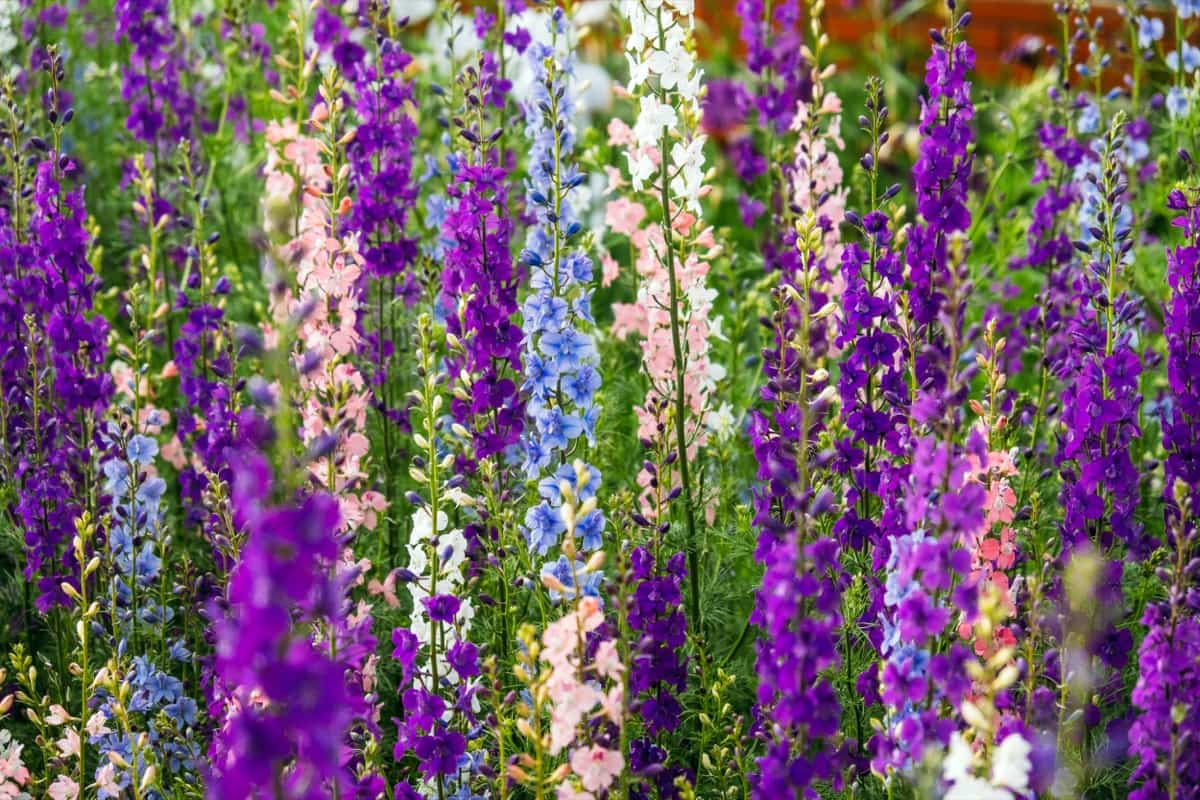
These perennials prefer full sun but will tolerate partial shade if necessary. They need well-draining soil and regular watering during dry spells. Larkspurs are low-maintenance plants requiring minimal pruning and deadheading, making them an ideal choice for novice gardeners. Larkspurs offer gorgeous blossoms on tall stems that quickly become standout pieces within your summer gardens while offering ever-changing hues to keep away from curious pets or children.
Tulips
Tulips are the most popular flowers for their stunning beauty and vibrant colors. These flowers come in shades, from bright reds to soft pinks and even pure white. One interesting fact about Tulips is that they can change color as they mature. A red Tulip may start with deeper tones but eventually fade into a softer shade.
In case you missed it: How to Plant Tulips from Bulbs: A Growing Guide to Sowing to Harvesting
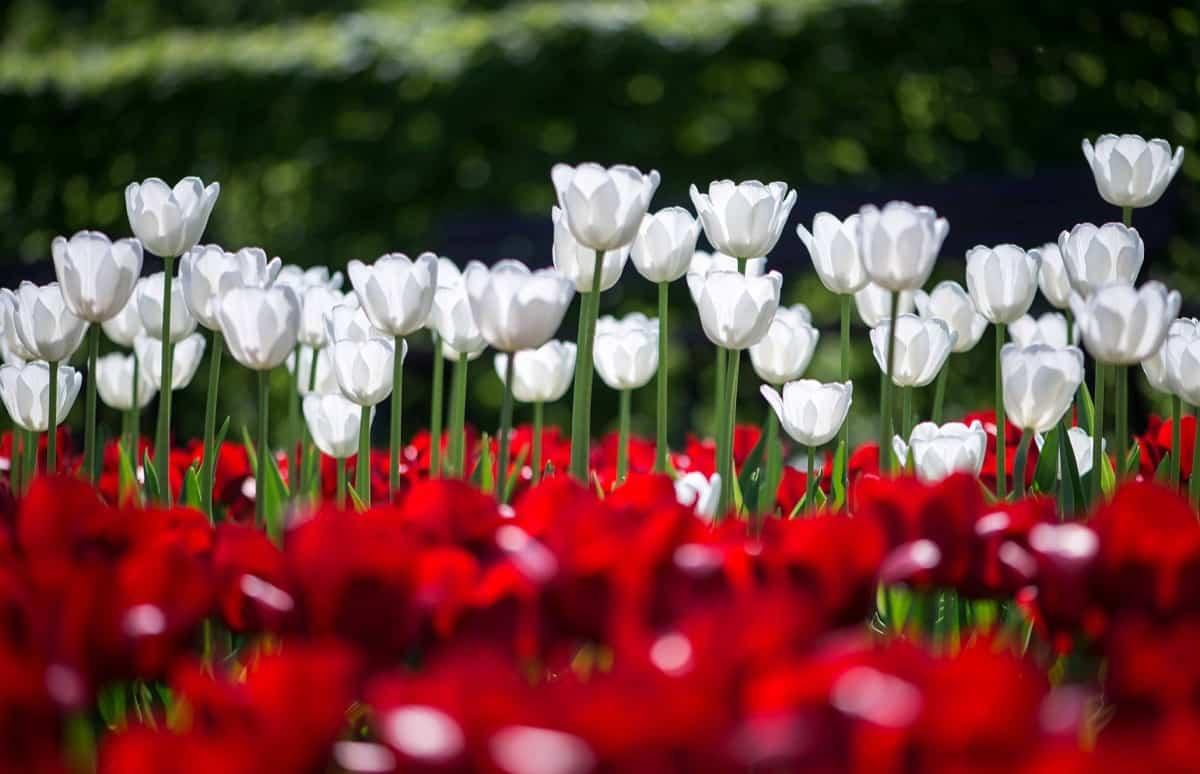
Another unique characteristic of Tulips is their ability to grow as perennials or annuals depending on where you live. In colder climates, these plants will bloom only once before dying back until next year’s growing season. However, in warmer areas, Tulips can be grown all year round. Tulips are truly magnificent flowers that capture the hearts and imaginations of people worldwide.
Butterfly Pea
Butterfly Pea is a beautiful plant that grows in tropical regions. The flowers of the Butterfly Pea are not only beautiful, but they have numerous medicinal properties too. The Butterfly Pea is a beautiful flower that changes color with the pH level of its environment. Besides its medicinal benefits, Butterfly Pea flowers are also used to make stunning drinks and dishes.
Its unique color changing ability also makes it an exciting drink for children. Adding lemon juice or lime turns the tea purple due to the acidic properties of citrus fruits. Butterfly Pea is not only visually appealing but also beneficial for our health. With its versatility in culinary use and medicinal value, this flower has gained popularity worldwide.
Morning Glory
Morning Glory is a beautiful flower that changes color depending on the time of day. This climbing annual vine blooms in the morning and closes up again at night. The flowers are available in shades of white, pink, purple, blue, and red, making them an attractive addition to any garden or landscape. The blooms are trumpet-shaped, ranging from 2 to 4 inches wide. Morning Glory attracts pollinators such as bees and butterflies which help with fertilization.
In case you missed it: Growing Morning Glory Flowers: How to Plant and Care
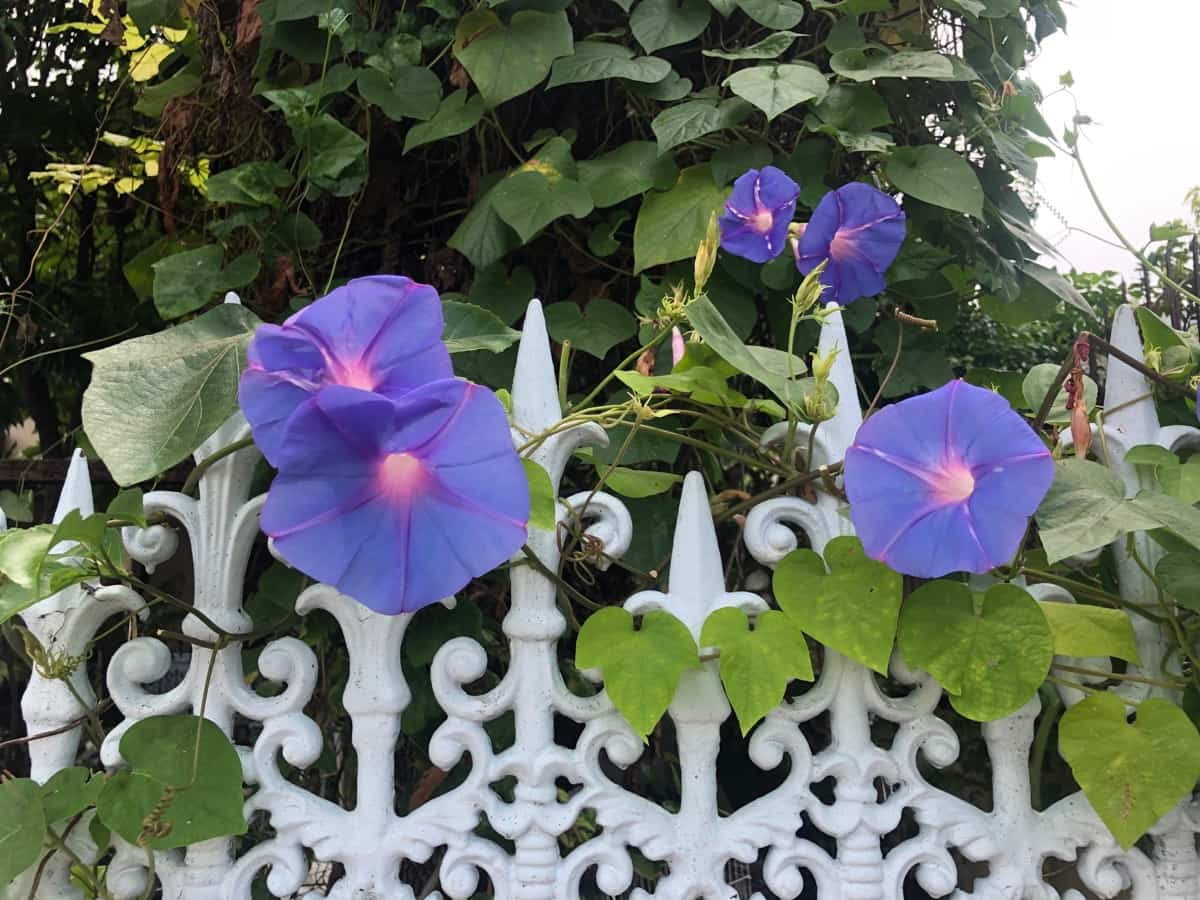
It’s easy to grow and requires full sun exposure for optimal growth. These hardy plants can thrive in various soil types but prefer well-drained soil. While Morning Glory is appreciated by many gardeners for its beauty, it’s important to note that all parts of the plant, including seeds, contain alkaloids which can be toxic if ingested in large quantities. Morning Glory is a beautiful flower that adds color and life to any outdoor space. Its unique ability to change colors throughout the day makes it worth waking up early.
Poinsettias
The bright red leaves associated with Poinsettias are called bracts, which surround small yellow flowers at the center of the plant. However, new varieties now offer Poinsettias in various colors, including pink, white, and multi-colored. To keep your Poinsettia thriving throughout the holiday season and beyond, place it in an area that receives plenty of natural light but avoids direct sunlight or cold drafts.
Four O’Clocks
Four O’Clocks are an amazing flower species that can change color several times. They come available in different colors, such as pink, white, yellow, and red. What is fascinating about these flowers is that they often have a different color on each petal. This unique phenomenon occurs due to the presence of anthocyanin pigments which are sensitive to pH levels.
When the pH level changes within the petals due to sunlight exposure or other factors, it causes them to change colors. This creates a gorgeous display of different shades and hues, making these flowers truly beautiful. Four O’Clocks are visually stunning and valuable to any garden or landscape design project.
Hydrangea
Hydrangeas are one of the most beloved flowering plants in the world. They come in various colors: blue, pink, white, and purple. If the soil is more acidic, Hydrangeas will produce blue flowers; but if it’s more alkaline, they’ll produce pink flowers. This makes them incredibly interesting flowers to grow and observe.
In case you missed it: When to Prune Hydrangea Varieties: A Step-By-Step Guide
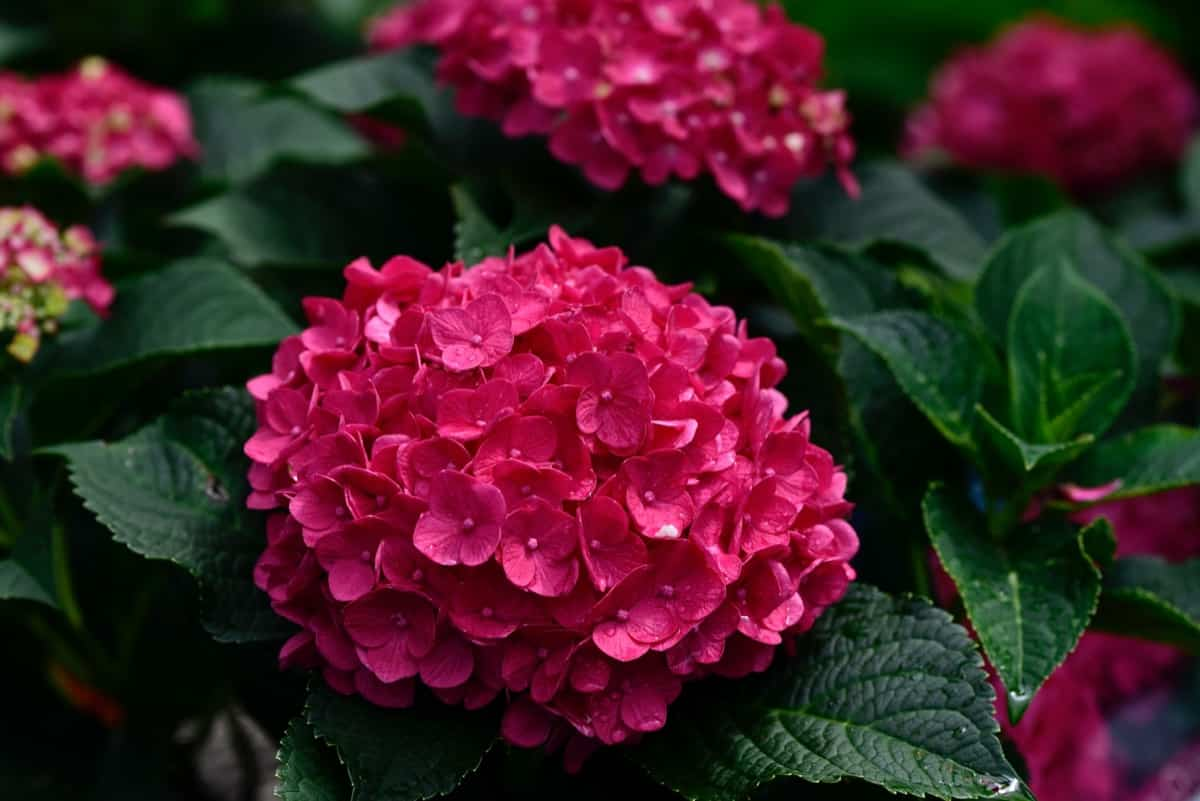
Plus, they’re relatively easy to care for. Hydrangeas prefer moist soil and partial shade. They also benefit from occasional fertilization with a balanced fertilizer. Hydrangeas are the best addition to any garden or landscape -not just because of their beautiful color changing ability but also because they are versatile enough to thrive in different growing conditions.
Confederate Rose
Confederate Rose is a stunning shrub that changes color as the day progresses. At dawn, its large pink flowers are pale and delicate, but by midday, they have deepened to a rich rose-red shade. It can change colors several times within one day. As evening falls, Confederate Roses shift back into their lighter hue – almost white. If you want an eye-catching addition that will provide interest throughout the day, consider adding some Confederate Roses.
Lantana
Lantana is a beautiful flowering plant that changes colors as it matures. The small clusters of flowers start as pink, orange, or yellow and gradually change to red, purple, or blue. Lantana is an exciting addition to any garden because you never know what color it will be next. One unique aspect of this plant is that the flowers are pretty and attract butterflies and hummingbirds. These pollinators love the sweet nectar produced by its tiny blooms.
Another reason why Lantana stands out from other plants is its toughness.

It can withstand hot temperatures and drought conditions with ease, making it perfect for areas with extreme climates. The best part about planting Lantana in your yard is how easy it is to care for. It requires minimal maintenance and pruning, making it ideal for busy homeowners who want their gardens to look great without putting too much effort into them. Lantana’s ever-changing colors, offset by its tough nature, make this plant an excellent choice for any garden enthusiast looking for something low-maintenance yet visually stunning.
Conclusion
The beauty of color changing flowers is truly magnificent. Color changing flowers are a fascinating natural phenomenon that can add vibrancy and beauty to any garden. The color changing process is mainly due to certain pigments in the flower petals, which react differently depending on temperature, pH levels, sunlight exposure, or even pollination.
Some flowers change color according to the soil acidity levels. Other plants detect light changes and trigger an enzymatic reaction leading to a temporary color shift from purple-blue during daylight hours to white at night. Color changing flowers have evolved diverse mechanisms over time that allow them to adapt and attract more pollinators with their stunning displays of colors.
- Growing Red Currants at Home for Beginners
- Gardening Techniques in Planting Vegetables
- Where to Place Indoor Plants in Your Home
- How to Grow Tomatoes Organically at Home: A Comprehensive Guide
- Organic Gardening on a Budget: Low-Cost Methods and Materials
- Gongura Seed Germination and Planting Methods
- Cabbage Seed Germination and Selection
- Broccoli Seed Germination and Selection
- Asparagus Seed Germination and Variety Selection
- Seasonal Flower Gardening: Best Practices for Spring, Summer, Fall, and Winter
- How to Grow Hibiscus from Flower
- Plantation Ideas for Home Decoration: A Beginners Guide
- Flower Garden Designs and Layouts for Beginners
- Planting and Spacing Techniques in Papaya: A Beginner’s Guide
- Growing Gold: Essential Techniques for Planting Pineapples
- How to Make Kalanchoe Plant Bushy: Home Remedies and Solutions
- 11 Reasons Why Your Gardenia is Not Blooming: Home Remedies and Solutions
- Eco Elegance: The Guide to Designing a Drought-Tolerant Landscape
- Gardening on a Slope: Strategies for Hillside Landscaping
- Nourish and Flourish: Top Organic Mulches for Thriving House Plants
- Everything You Want to Know about Indian Mogra Flower: Discover Uses and Growing
- Green Thumb Success: Expert Tips for Cultivating Greenhouse Pumpkins All Year Round
- Maximize Growth & Flavor: The Ultimate Guide to Companion Planting in Herb Gardens
- How to Control Rhododendron Problems Naturally: Home Remedies and Organic Ways to Fix Them
- Natural Magic: The Remarkable Benefits of Cinnamon for Plants
- Best Steps to Revive Dying Tulip with Natural and Organic Treatment
- 10 Reasons Why Your Angel Trumpet is Not Blooming: Remedies and Treatment
- How to Fix Periwinkle Leaf and Flower-Related Problems: Natural Remedies and Solutions
- How to Fix Zinnias Leaf and Flower Problems: Discover Natural and Home Remedies
- Organic Steps to Induce Lemon Tree Flowers: A Comprehensive Guide
- Bloom Booster: Crafting the Perfect Homemade Bougainvillea Fertilizer
- Optimizing Growth: A Guide to Applying NPK Fertilizer for Potted Plants
- 10 Best Homemade Fertilizers for Rubber Plant: DIY Recipes and Application Method
- How to Boost Female Pumpkin Flowers: Effective Steps for More Flowers and High Yields
- Transform Your Indoor Garden: Top Benefits of Pink Salt for Houseplants
- 10 Best Homemade Fertilizers for Peacock Plants (Calathea): Easy DIY Guide